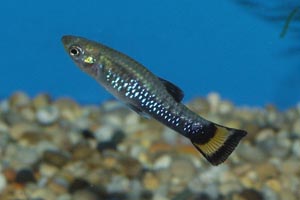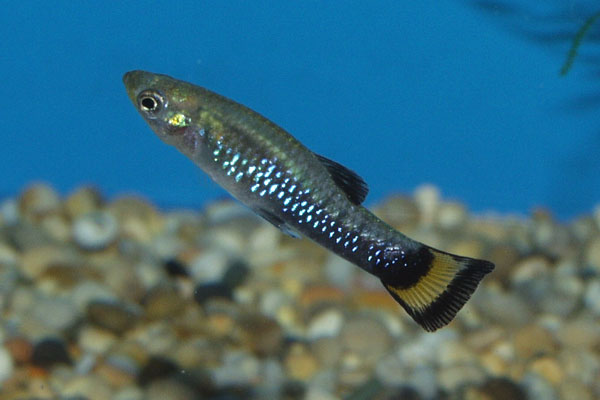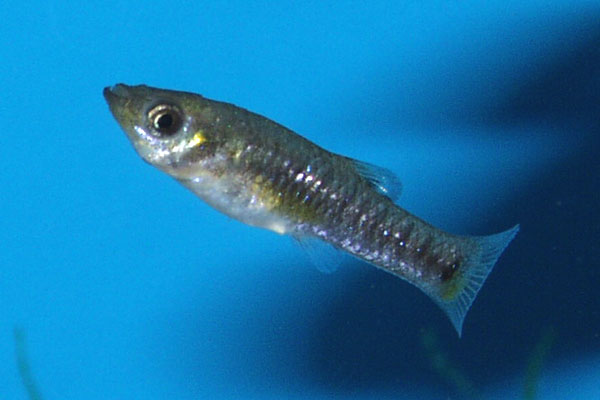

Species Profile | Images | Breeding Report | Similar Species

(Other members of the genus Limia)
ADULT SIZE: 4 cm
WATER CONDITIONS: Moderately hard and alkaline
TEMPERATURE RANGE: 23-27 C
FOOD: Feed Limia melanogaster small live-foods and fine grade dried foods
DISTRIBUTION: This species comes from Haiti, Jamaica
AQUARIUM CARE: These livebearers are easy to keep; they will largely look after themselves, eating most foods offered, and grazing on algae when present. Green food should be a part of any Limia diet: shelled peas, blanched courgette or cucumber, lettuce etc. Like most livebearers they prefer slightly harder alkaline water.
BREEDING: Limias are livebearers; the male has a gonopodia (see top image) and the (larger) female gives birth to around 15 live young. The black bellied Limia reproduces as prolifically as any guppy.
Have you bred Limia melanogaster? Why not fill in a breeding questionaire?, or examine existing Limia melanogaster breeding reports

A male Limia melanogaster *blue*

A female Limia melanogaster *blue*
BREEDING: Limias are livebearers; the male has a gonopodia (see top image) and the (larger) female gives birth to around 15 live young. The black bellied Limia reproduces as prolifically as any guppy.
Have you bred Limia melanogaster? Why not fill in a breeding questionaire?
This page summarises breeding reports provided by visitors to this site, along with some statistical analysis. Please feel free to contribute - whatever your experience!
| |||||||||
|
| ||||||||
|
| ||||||||
| |||||||||
|
| ||||||||
Remember, each record represents only one persons experience; if you had different results, or used different methods, please share your experiences
| Water conditions: Moderately hard and alkaline | Water temperature: 16-19oC |
| Disposition: Active, but not aggresive | Community tank?: Yes, a good community fish |
| Spawning Method: Long term (fry appear with adults) | Breeding problems: none |
| Sex ratio: Somewhat male heavy | Breeding difficulty: Average |
| Sucess: Fairly unsucessful | Years Experience: 10 |
| Other Comments: | |
| Date this record created: 22nd September 2011 | Breeding date: 2011 |
| Breeder: | Location: Canada |